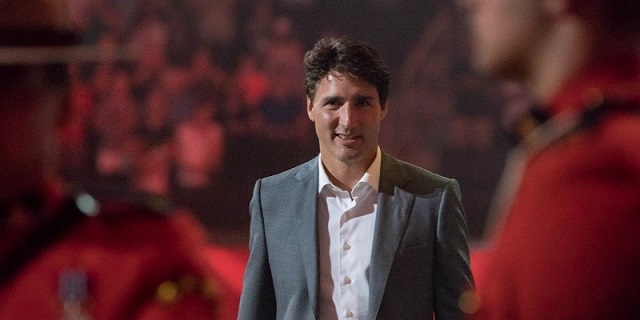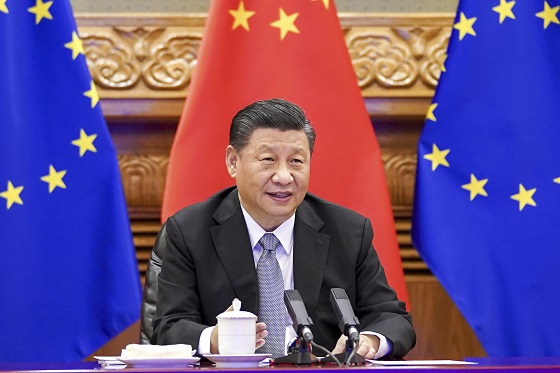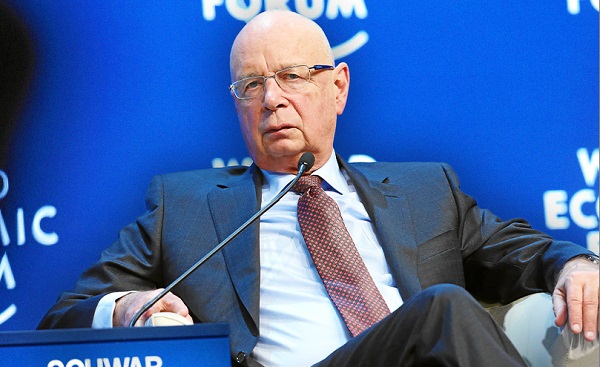Economy
Federal government’s fiscal plan raises red flags

From the Fraser Institute
By Jason Clemens, Jake Fuss and Grady Munro
The Trudeau government recently released its fiscal update, which provides revised estimates of spending, taxing and borrowing. A careful examination of the update raises several red flags about the state of Canada’s national finances.
First, some analyses raised concerns about the state of federal borrowing, which are well founded. While the government downplays the level of potential borrowing over the six years covered in the fiscal update, the projected deficit—that is, the amount of spending in a specific year in excess of the amount of revenues—will reach $40.0 billion this year (2023-24) and $38.4 billion next year. However, the estimate for next year does not include the national pharmacare plan that the Trudeau government has agreed to as part of its governing agreement with the NDP.
The Parliamentary Budget Officer (PBO) estimated that a national pharmacare plan modelled on the Quebec system would cost $11.2 billion in 2024-25 (the provinces would likely cover some of this). The 2019 report of the Advisory Council on the Implementation of National Pharmacare, better known as the Hoskins Commission, estimated that a national pharmacare program would cost $15.3 billion in 2027.
Consequently, if the government introduces national pharmacare next year, without any offsetting reduction in other spending and/or meaningful tax increases, the deficit for 2024-25 would reach $49.6 billion, not the reported $38.4 billion. The higher borrowing needed to finance pharmacare continues each and every year, meaning that the overall level of federal debt would also increase.
A second red flag, which the fiscal update ignored, relates to Canada meeting its international commitment for defence spending. Canada is a party to the NATO agreement calling on member countries to spend 2.0 per cent of GDP on national defence. In 2022, Canada spent just 1.3 per cent of GDP on defence. According to the PBO, for the federal government to meet its NATO spending obligations next year (2024-25), it must spend an additional $14.5 billion. That means annual borrowing could be as high as $64.1 billion if both additional defence and pharmacare spending were financed entirely by new borrowing.
And there are legitimate reasons to believe the government would not raise taxes to finance a new pharmacare program. According to polling data in 2022, 79 per cent of survey respondents supported a new national pharmacare program—but support plummeted to just 40 per cent when the new hypothetical program was financed by higher taxes, specifically a higher GST.
That brings us to the third red flag. The total national debt will reach a projected $2.1 trillion next year (excluding the additional potential spending and borrowing noted on pharmacare and defence) and the interest costs on that debt are expected to reach $52.4 billion. For reference, the total national debt stood at $1.1 trillion in 2015-16 when the Trudeau Liberals took office.
By 2028-29, the last year included in the fiscal update, the federal government expects interest costs to reach $60.7 billion. That’s only slightly less than total planned health-care spending by Ottawa for the same year ($62.9 billion). And this is actually a conservative estimate since it excludes potential higher borrowing for programs such as pharmacare and thus higher debt levels. It also ignores any possibility of a downgrading in the ratings for Canada’s debt, which would result in higher interest costs. And it ignores the risk of an economic slowdown or recession that would further increase borrowing and ultimately debt interest costs.
While the federal government, particularly the prime minister and his finance minister, continue to describe their stewardship of federal finances as prudent and responsible, close examination of their fiscal update reveals that federal finances may soon deteriorate from their already worrying position.
Authors:
Business
Trump: China’s tariffs to “come down substantially” after negotiations with Xi

 MxM News
MxM News
Quick Hit:
President Trump said the 145% tariff rate on Chinese imports will drop significantly once a deal is struck with Chinese President Xi Jinping, expressing confidence that a new agreement is on the horizon.
Key Details:
- Trump said the current 145% tariff rate on China “won’t be anywhere near that high” after negotiations.
- He pointed to his relationship with Xi Jinping as a reason for optimism.
- The White House said it is preparing the groundwork for a deal, and Treasury officials expect a “de-escalation” of the trade war.
Diving Deeper:
President Donald Trump on Tuesday told reporters that the steep tariff rate currently imposed on Chinese imports will come down substantially after his administration finalizes a new trade deal with Chinese President Xi Jinping. While the current level stands at 145%, Trump made clear that number was temporary and would be adjusted following talks with Beijing.
“145 percent is very high. It won’t be that high, it’s not going to be that high … it won’t be anywhere near that high,” Trump said from the Oval Office, signaling a shift once a bilateral agreement is reached. “It will come down substantially, but it won’t be zero.”
The tariff, which Trump previously described as “reciprocal,” was maintained on China even after he delayed similar penalties on other trading partners. Those were cut to 10% and paused for 90 days to allow room for further negotiation.
“We’re going to be very nice. They’re going to be very nice, and we’ll see what happens. But ultimately, they have to make a deal because otherwise they’re not going to be able to deal in the United States,” Trump said, reinforcing his view that the U.S. holds the leverage.
Trump’s remarks come as markets remain wary of ongoing trade tensions, though the White House signaled progress, saying it is “setting the stage for a deal with China.” The president cited his personal rapport with Xi Jinping as a key factor in his confidence that an agreement can be reached.
“China was taking us for a ride, and it’s not going to happen,” Trump said. “They would make billions a year off us and build up their military with our money. That’s over. But we’ll still be good to China, and I think we’ll work together.”
Treasury Secretary Scott Bessent also said Tuesday that he expects a cooling of trade hostilities between the two nations, according to several reports from a private meeting with investors.
As the 90-day pause on other reciprocal tariffs nears its end, Trump emphasized that his team is prepared to finalize deals quickly. “We’ve been in talks with many, many world leaders,” he said, expressing confidence that talks will “go pretty quickly.”
White House Press Secretary Karoline Leavitt added that the administration has received 18 formal proposals from other countries engaged in trade negotiations, another sign that momentum is building behind Trump’s broader push to restructure global trade in favor of American workers and businesses.
(Li Xueren/Xinhua via AP)
2025 Federal Election
Next federal government should end corporate welfare for forced EV transition

From the Fraser Institute
By Tegan Hill and Jake Fuss
Corporate welfare simply shifts jobs and investment away from other firms and industries—which are more productive, as they don’t require government funding to be economically viable—to the governments’ preferred industries and firms, circumventing the preferences of consumers and investors. And since politicians spend other people’s money, they have little incentive to be careful investors.
General Motors recently announced the temporary closure of its electric vehicle (EV) manufacturing plant in Ontario, laying off 500 people because its new EV isn’t selling. The plant will shut down for six months despite hundreds of millions in government subsides financed by taxpayers. This is just one more example of corporate welfare—when governments subsidize favoured industries and companies—and it’s time for the provinces and the next federal government to eliminate it.
Between the federal government and Ontario government, GM received about $500 million to help fund its EV transition. But this is just one example of corporate welfare in the auto sector. Stellantis and Volkswagen will receive about $28 billion in government subsidies while Honda is promised $5 billion.
More broadly, from 2007 to 2019, the last pre-COVID year of data, the federal government spent an estimated $84.6 billion (adjusted for inflation) on corporate welfare while provincial and local governments spent another $302.9 billion. And crucially, these numbers exclude other forms of government support such as loan guarantees, direct investments and regulatory privileges, so the actual cost of corporate welfare during this period was much higher.
Of course, politicians claim that corporate welfare benefits workers. Yet according to a significant body of research, corporate welfare fails to generate widespread economic benefit. Think of it this way—if the businesses that received subsidies were viable to begin with, they wouldn’t need government support. So unprofitable companies are kept in business through governments’ support, which can prevent resources, including investment and workers, from moving to profitable companies, hurting overall economic growth.
Put differently, rather than fuelling economic growth, corporate welfare simply shifts jobs and investment away from other firms and industries—which are more productive, as they don’t require government funding to be economically viable—to the governments’ preferred industries and firms, circumventing the preferences of consumers and investors. And since politicians spend other people’s money, they have little incentive to be careful investors.
Governments also must impose higher tax rates on everyone else to pay for corporate welfare. In turn, higher tax rates discourage entrepreneurship and business investment—again, which fuels economic growth. And the higher the tax rates, the more economic activity they discourage.
GM’s EV plant shut down once again proves that when governments try to engineer the economy with corporate welfare, workers will ultimately lose. It’s time for the provinces and the next federal government—whoever it may be—to finally put an end to this costly and ineffective policy approach.
-

 2025 Federal Election2 days ago
2025 Federal Election2 days agoOttawa Confirms China interfering with 2025 federal election: Beijing Seeks to Block Joe Tay’s Election
-

 2025 Federal Election1 day ago
2025 Federal Election1 day agoBREAKING: THE FEDERAL BRIEF THAT SHOULD SINK CARNEY
-

 2025 Federal Election1 day ago
2025 Federal Election1 day agoHow Canada’s Mainstream Media Lost the Public Trust
-

 2025 Federal Election1 day ago
2025 Federal Election1 day agoReal Homes vs. Modular Shoeboxes: The Housing Battle Between Poilievre and Carney
-

 2025 Federal Election1 day ago
2025 Federal Election1 day agoCHINESE ELECTION THREAT WARNING: Conservative Candidate Joe Tay Paused Public Campaign
-

 John Stossel1 day ago
John Stossel1 day agoClimate Change Myths Part 2: Wildfires, Drought, Rising Sea Level, and Coral Reefs
-

 COVID-191 day ago
COVID-191 day agoNearly Half of “COVID-19 Deaths” Were Not Due to COVID-19 – Scientific Reports Journal
-

 Business23 hours ago
Business23 hours ago‘Great Reset’ champion Klaus Schwab resigns from WEF










